For anyone who shoots a large volume of film and doesn’t always process it right away or sends it off to get processed. It can be difficult to retain a lot of the details in your head. So when I began to send film away to the awesome folks at Old School Photolab and The Darkroom. I needed something to record the date, camera, location, lens, film, and any other details that I may need for when I posted the images. I started carrying around a simple notebook and pen to record all this in. It worked! When I started shooting large format, I would also record the exposure information. I would then transfer the information into a spreadsheet, with additional information such as processing and where I stored the negatives. But there weren’t any dedicated notebooks on the market specifically for film photography. But in 2016 two dedicated photo notebooks entered the market and it’s those notebooks I’m going to talk about today.
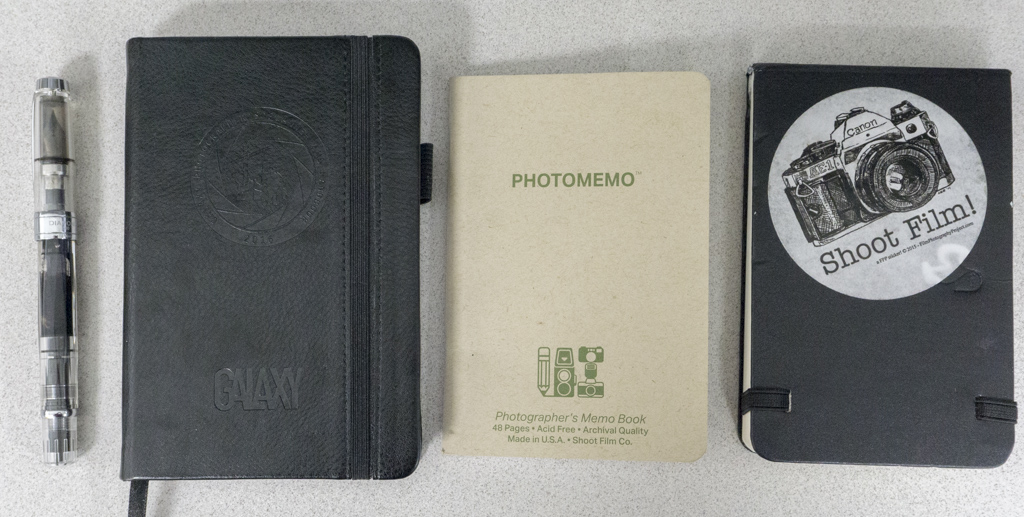
Galaxy Photographer’s Planner and Handbook (GPP&H)
The Galaxy notebook was a highly anticipated notebook from the folks at Galaxy who brought us a high speed direct positive photographic paper. The journal is based on one used by photographer George Murray Levick during the Terra Nova Expedition. The GPP&H is a beautiful journal, well made, leatherette cover, ribbon bookmark, and an elastic to hold it closed. The paper is heavyweight and holds ink well without any feathering (what happens when the ink spreads into other fibres of the paper). The paper texture is smooth making it easy to write on. Inside the book, you’ll find a wealth of information for almost everything related to photography. Exposure information, the Sunny-16 Rule, Online Resources, there’s even a pile of film and paper developer formulas. There’s also a calendar and plenty of space for your photography logs; this is where the book fails. While this keeps the book fairly thick, it isn’t too bad to carry around in your camera bag or even a pocket.
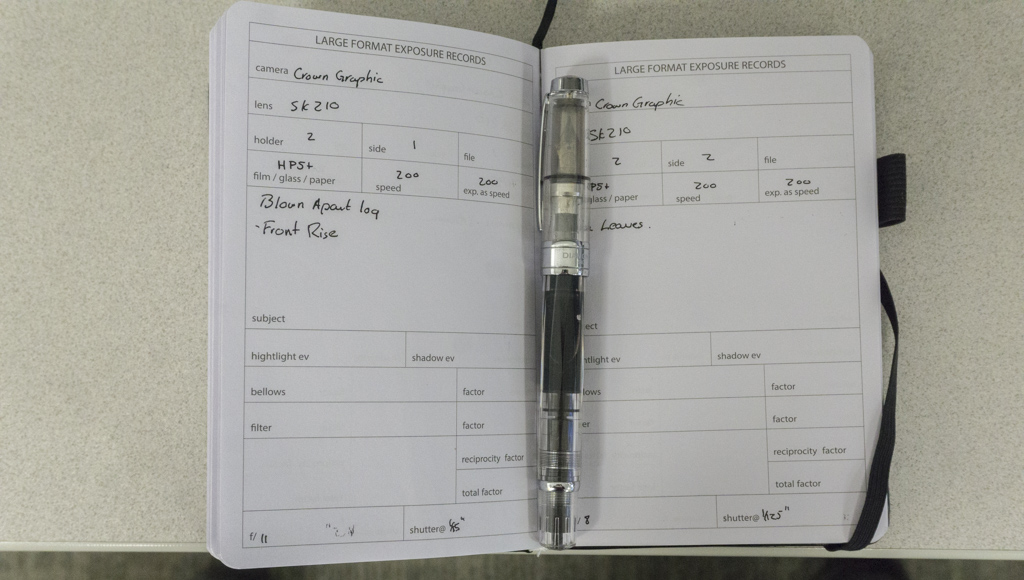
The simple fact is that the GPP&H tries too hard. Is it a planner, Handbook, or journal? Well, it attempts to be all three and loses out because of that. The book contains a full history of the journal and its design, a pile of key dates, calendar, exposure logs, location scouting, and blank note space. It’s all well and good, but seriously it’s a bit overloaded when all I want in such a book is to record the film I’ve shot. The first of these logs is the Ansel Adams’ designed “Exposure Record” I can’t make heads or tails of these sheets. I know they have something to do with the zone system, but not knowing much about that system, beyond how I apply it (Shadows in Zone IV, thanks, Mat!). Next up is the Large Format records, these are my favourite part of the book. I pretty much have everything here that I usually would record and then some, the only thing missing is a spot to record any camera movements. The roll film section just asks too much information that I simply do not record such as lens and exposure data. So these sections just are a waste of space, to be honest. Also, the notebook states that it’s for all types of roll film yet there are only 12 spots per page, which means you’ll have to take over several pages per roll and heaven forbid you’re shooting half-frame on a 36 exposure roll. The area for darkroom prints is pretty handy, and I’ll probably give that some love when I get back into the darkroom printing. The location scouting section is well laid out also giving you plenty of space to make notes on spots you come across in your travels, and I’ll certainly use it to keep notes for future shoots and walks.
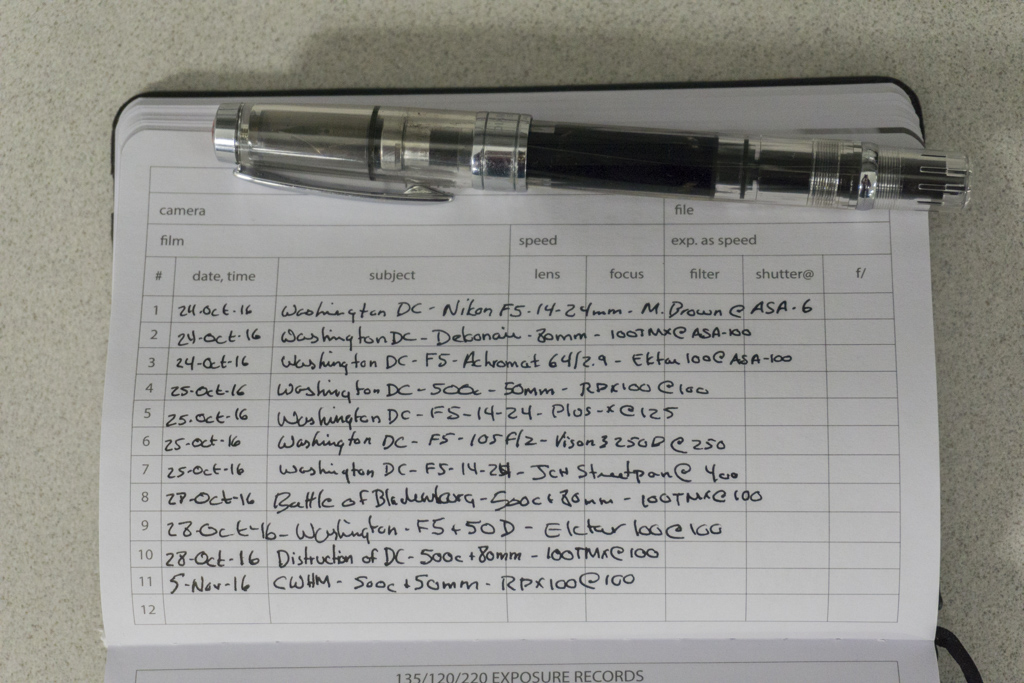
Despite some added bulk, the GPP&H isn’t a bad notebook; it just tries too hard. And with the calendar element to it, you loose out because once the year ends, two whole sections of the journal can no longer see use. And while I probably won’t be using it on a regular basis as one that comes with me on trips, it will have a spot on my shelf for various other uses like the formulas and journalling locations and darkroom prints.
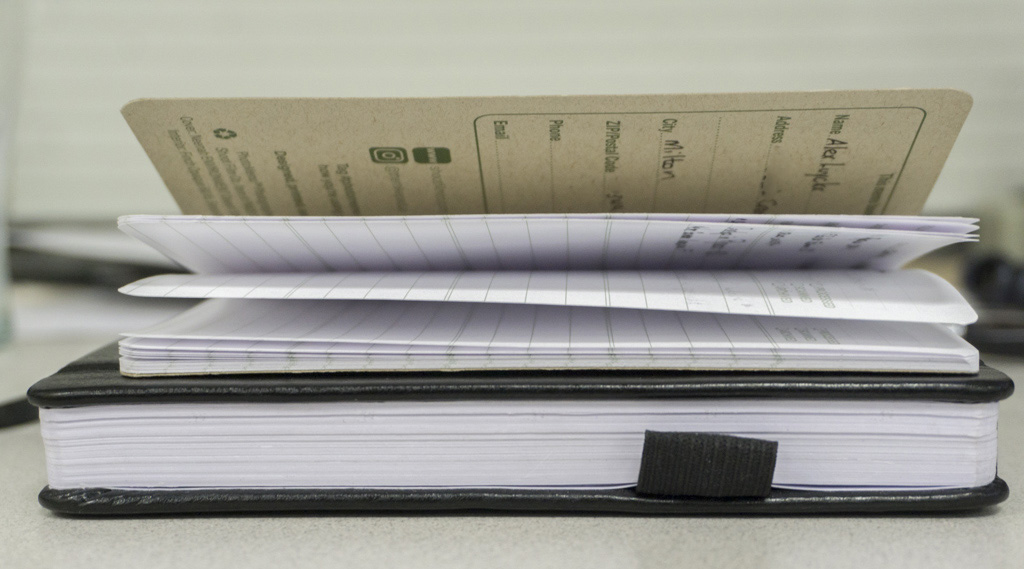
Shot Film Co. PhotoMemo (SFPM)
If the GPP&H is the Moleskine, then the SFPM is the Field Notes of the Photography Notebook world. The SFPM does not try to be anything other than a practical book that does one thing and one thing only, record notes on roll film. But don’t let the small thin size scare you off, I don’t call it similar to Field Notes for nothing. This one is tough, having used several Field Notes books in the past this thing can take a beating. Inside you’ll find smooth paper, that is nominally thick and can hold pen ink well, and I’m talking fountain pen here. There is a small amount of feathering and some bleed through but nothing to cause me alarm.
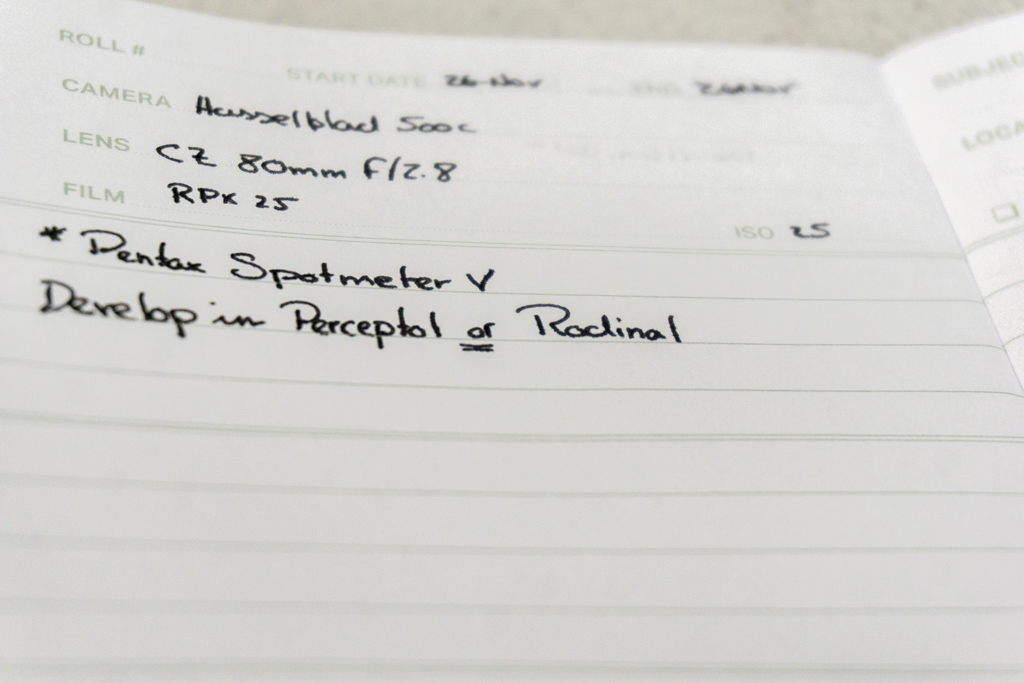
While the SFPM doesn’t try to be anything more than a book to record roll film notes, It does suffer the same problem as the GPP&H on the log pages; there’s way too much space for what I record, so I end up only using the top sections and recording some additional notes below. Which makes me feel bad that I’m wasting such a great notebook. But if you do record everything about every frame you shoot than there’s plenty of space for around 35 exposures per record. Honestly, if you don’t like drawing up your notes in a simple notebook, the SFPM is the book I would personally recommend, especially if you take a pile of notes on each roll. While smaller than the GPP&H you certainly have more space to record details in the PhotoMemo.

To be perfectly honest, I don’t think I’ll be using either notebook in any substantial capacity in the field. I’ve come to realize that I only record the necessary information when I’m in the field and my simple reporter style notebook is enough for me plus I can always fill in the gaps when I go to enter the data into the Excel spreadsheet. But if you’re the type who likes a dedicated notebook you can pick up both items online, The Galaxy Photographer’s Planner and Handbook from B&H and the PhotoMemo directly from Shoot Film Co. And to close I would like to give big thanks to Shoot Film Co. who graciously donated their PhotoMemo book to me for this review.